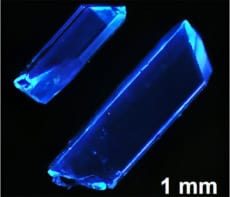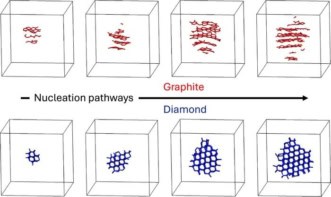You might think of ice cream as a delicious treat to be enjoyed on a sunny summer’s day. However, to the ice-cream scientists who recently gathered in Thessaloniki in Greece for the 2nd International Ice Cream Symposium, it is a complex composite material. Ice cream consists of three dispersed phases: ice crystals, which have a mean size of 50 microns, air bubbles with a diameter of about 70 microns, and fat droplets with a size of 1 micron. These phases are held together by what is called the matrix – not a sci-fi film, but a viscous solution of sugars, milk proteins and polysaccharides.
The microstructure, and hence the texture that you experience when you eat ice cream, is created in a freezing process that has remained fundamentally unchanged since the first ice-cream maker was patented in the 1840s. The ingredients – water, milk protein, fat, sugar, emulsifiers, stabilizers, flavours and a lot of air – are mixed together before being pasteurized and homogenized. They are then pumped into a cylinder that is cooled from the outside with a refrigerant. As the mixture touches the cylinder wall it freezes and forms ice crystals, which are quickly scraped off by a rotating blade. The blade is attached to a beater that disperses the ice crystals into the mixture. At the same time, air is injected and broken down into small bubbles by the shear that the beater generates.
As the mixture passes along the cylinder, the number of ice crystals increases and its temperature drops. As a result, the viscosity of the mixture increases, so that more energy input is needed to rotate the beater. This energy is dissipated as heat, and when the ice cream reaches about -6ºC the energy input through the beater equals the energy removed as heat by the refrigerant. The process therefore becomes self-limiting and it is not possible to cool the ice cream any further. However, at -6ºC the microstructure is unstable. The ice cream therefore has to be removed from the freezer and then hardened in a very cold air flow.
In the August issue of Physics World Chris Clarke of Unilever R&D in the UK describes the latest research into ice cream.



